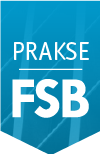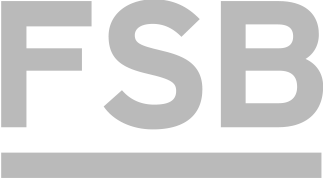International Exchange
Course details
Student Mobility > Programmes and Courses > Courses in English > Course detailsComputer Aided Nondestructive Testing
- Teaching: 3 - Partially 2 (Partially in English - lessons held in Croatian, excercies, materials & exam in English)
- ECTS: 4
- Level: Graduate
- Semester: Summer
- Prerequisites:
- Knowledge of the physical basics of ultrasonic and electromagnetic waves.
- Load:
Lectures Exercises Laboratory exercises Project laboratory Physical education excercises Field exercises Seminar Design exercises Practicum 30 3 12 0 0 0 0 0 - Course objectives:
- Adoption of the basic knowledge and skills for controlling the testing systems by means of computer within common configurations used in non-destructive testing methods.
- Student responsibilities:
- Grading and evaluation of student work over the course of instruction and at a final exam:
- Methods of monitoring quality that ensure acquisition of exit competences:
- Students individually and collectively carry out laboratory tests and solve project tasks under the supervision of teachers and associates. Students" understanding of the lessons is continuously monitored. Various students" activities are commented and evaluated through LMS system: tasks, messages, discussions, Q&A forum, wiki, tests, analysis of activities within the LMS. The interaction with students during the class (questions and discussions) is basis for the follow-up of the students" progress in adopting competencies and skills in accordance with the learning outcomes.
- Upon successful completion of the course, students will be able to (learning outcomes):
- To comment relevant factors of computer aided NDT regarding reliability and validity of results / outcomes. To compare the advantages and limitations of automated NDT applications. Critically assess the acquisition and transfer of signal response in particular NDT methods. Interpret and evaluate the characteristics of the inspected specimen on the basis of digital image records obtained by NDT methods.
- Lectures
- 1. Analysis of testing systems and determination of the significant components, reliability of inspection, real-time non-destructive testing
- 2. Comparability of results, distinction criteria and decision criteria, data fusion
- 3. Ultrasonic testing method, method principles, techniques, testing automation, resolution and sensitivity
- 4. Probes and transducers, acquisition and interpretation of ultrasonic echo signals
- 5. Probe positioning systems, scanning techniques, scanning parameters and acquisition
- 6. Generating 2D scan by means of computer algorithms: A scan, B scan, B time scan
- 7. Generating 3D scan by means of computer algorithms: C scan, tomography
- 8. Control of ultrasonic equipment by means of computer, economical aspects
- 9. Phased array probes - advanced control of ultrasonic beam - shape, direction and beam focusing
- 10. Visual inspection, penetrant testing, magnetic method: registering of indications by means of digital camera
- 11. Digital photography, image formats, resolution: obtained resolution, interpretation of flaw parameters
- 12. Digital radiography: sensors, instruments and equipment, software, application, economical aspects
- 13. Radioscopy: real-time radiography, instruments and equipment, parameters, application, micro focus radiography, economical aspects
- 14. Acoustical methods, sources of signals, ensuring the coherence, impact-echo technique
- 15. Application of automated NDT procedures, remote control, simulations
- Exercises
- 1. Demonstration and overview of non-destructive testing methods, quantitative parameters of reliability of testing procedures
- 2. Mathematical operations applied on signals, examples on digital oscilloscope
- 3. Ultrasonic impulse echo technique, digital instruments and equipments, testing parameters
- 4. Connecting digital ultrasonic instruments with computer, control and communication protocols, software
- 5. Selecting and setting the testing parameters by means of computer
- 6. Continuous and discrete scanning, scanning increment, scanning speed
- 7. Practical work with three axis manipulator, acquisition of ultrasonic echo signals
- 8. Saving the acquired data, record formats, standards and requirements
- 9. Simulation: computer controlled excitation of phased array probes
- 10. Characteristics of digital cameras, settings, selection of parameters regarding viewing conditions, UV light!
- 11. Practical work: procedures for registering of detected indications by means of digital camera, measurement and ensuring the comparability of results for the purpose of the continuous monitoring
- 12. Computer tomography: CT, contrast, density, sensitivity, filtration, extraction
- 13. Practical work: digitalisation of radiographs, manipulation, parameter assessment on digital radiograph ??â,¬â€? image definition, contrast, density
- 14. Appropriate presentations, location determination, software
- 15. Colloquium
- Compulsory literature:
- www.ndt-ed.org;
Krstelj, V.: Ultrazvučna kontrola, odabrana poglavlja, FSB, Zagreb, 2003.;
www.ndt.net - Recommended literature:






